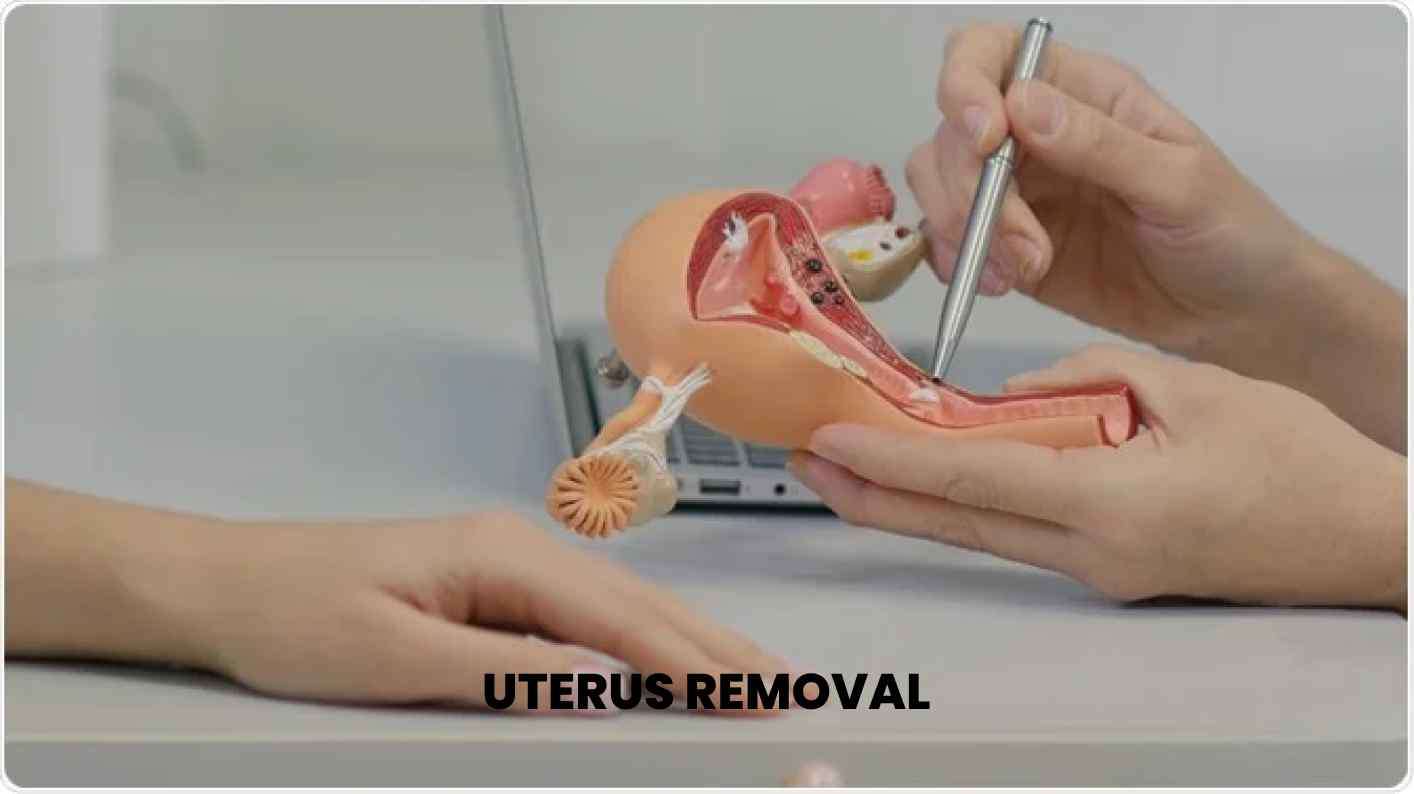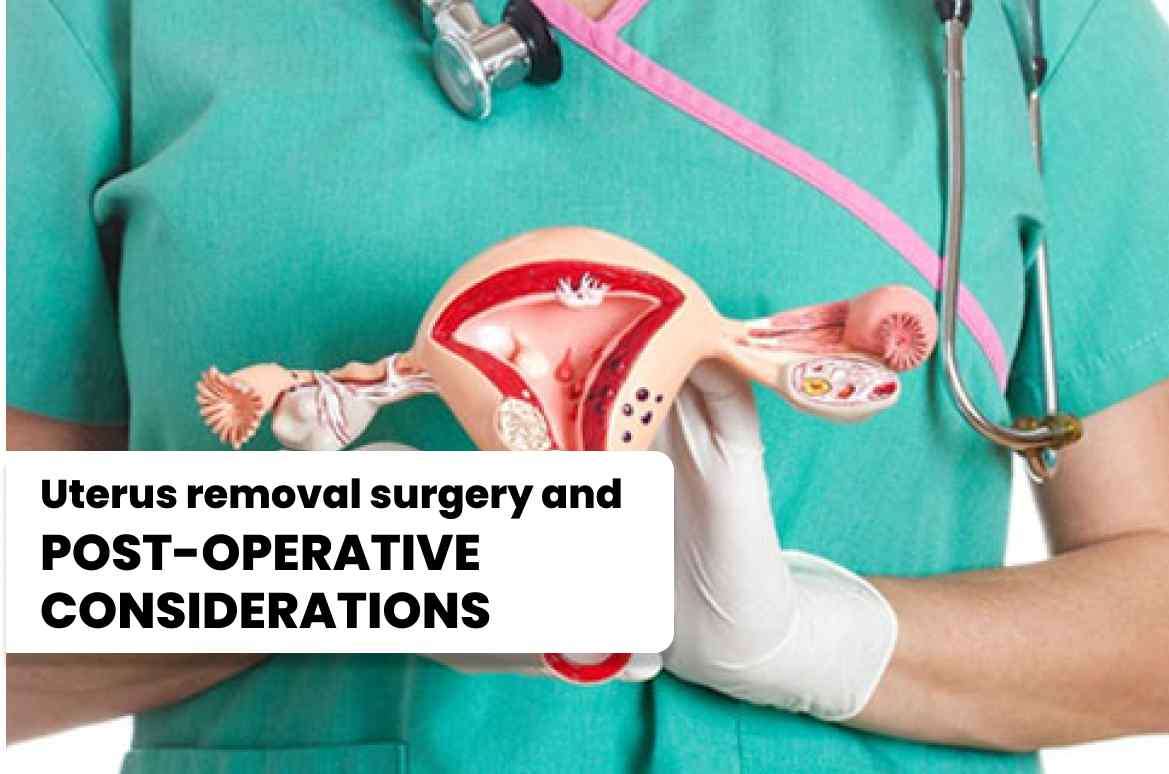It is important to note that a hysterectomy is a major surgical procedure and should be considered after careful consultation with a gynecologist or healthcare professional. They will evaluate your specific condition, discuss the potential risks and benefits, and help you make an informed decision based on your individual circumstances.
Uterus removal, also known as a hysterectomy, is the surgical removal of the uterus, and in some cases, the cervix and ovaries. This procedure is performed for various reasons, including uterine polyps, endometrial polyps, uterine fibroids, and other gynecological conditions.
Reasons for Uterus Removal/hysterectomy:
Uterine polyp removal: Uterine polyps are abnormal growths that develop in the lining of the uterus. When these polyps cause symptoms or are suspected to be cancerous, they may need to be removed through a hysterectomy.
Endometrial polyp removal: Similar to uterine polyps, endometrial polyps are abnormal growths that occur in the lining of the uterus. If they cause symptoms or are suspected to be cancerous, a hysterectomy may be necessary.
Uterine fibroids: Fibroids are non-cancerous growths that form in the muscular wall of the uterus. When fibroids are large, cause severe symptoms, or significantly impact a woman's quality of life, a hysterectomy may be the recommended treatment.
There are several types of hysterectomy procedures available, depending on the specific circumstances. These include: Total hysterectomy: This procedure involves the removal of the entire uterus, including the cervix. Sometimes, the ovaries and fallopian tubes are also removed in a procedure known as a bilateral salpingo-oophorectomy. Simple hysterectomy: In a simple hysterectomy, only the uterus is removed, while the cervix is left intact. This procedure may be suitable for certain conditions that don't require removal of the cervix. Laparoscopic hysterectomy: A laparoscopic hysterectomy is a minimally invasive procedure where small incisions are made in the abdomen. Specialized instruments and a camera are inserted through these incisions to perform the removal of the uterus.

There are several types of hysterectomy procedures available, depending on the specific circumstances. These include:
Total hysterectomy: This procedure involves the removal of the entire uterus, including the cervix. Sometimes, the ovaries and fallopian tubes are also removed in a procedure known as a bilateral salpingo-oophorectomy.
Simple hysterectomy: In a simple hysterectomy, only the uterus is removed, while the cervix is left intact. This procedure may be suitable for certain conditions that don't require removal of the cervix.
Laparoscopic hysterectomy: A laparoscopic hysterectomy is a minimally invasive procedure where small incisions are made in the abdomen. Specialized instruments and a camera are inserted through these incisions to perform the removal of the uterus.
Uterus removal surgery can be performed through different surgical approaches, such as: Open abdominal hysterectomy: This traditional approach involves a larger incision in the abdomen, allowing the surgeon to access and remove the uterus. It may be recommended for complex cases or when additional procedures are needed. Vaginal hysterectomy: In a vaginal hysterectomy, the uterus is removed through the vagina, without any external incisions. This approach results in no visible scarring and a potentially faster recovery. Laparoscopic hysterectomy: A laparoscopic hysterectomy is a minimally invasive procedure where small incisions are made in the abdomen. Specialized instruments and a camera are inserted through these incisions to perform the removal of the uterus. This approach offers benefits such as smaller incisions, reduced blood loss, and quicker recovery times.
After uterus removal, certain considerations should be kept in mind: Recovery period: The recovery time after a hysterectomy varies depending on the surgical approach and individual factors. It is essential to follow the post-operative instructions provided by the healthcare team. Hormonal changes: If the ovaries are removed along with the uterus, hormonal changes may occur, potentially leading to menopausal symptoms. Hormone replacement therapy may be prescribed to manage these symptoms. Sexual function: Uterus removal does not necessarily impact sexual function, but physical and emotional changes may occur. Open communication with healthcare providers and partners can help address any concerns or questions. Long-term health: Uterus removal eliminates the possibility of pregnancy and may impact certain health conditions. Regular check-ups and discussions with healthcare professionals are crucial for overall health monitoring.

Uterus removal surgery can be performed through different surgical approaches, such as:
Open abdominal hysterectomy: This traditional approach involves a larger incision in the abdomen, allowing the surgeon to access and remove the uterus. It may be recommended for complex cases or when additional procedures are needed.
Vaginal hysterectomy: In a vaginal hysterectomy, the uterus is removed through the vagina, without any external incisions. This approach results in no visible scarring and a potentially faster recovery.
Laparoscopic hysterectomy: A laparoscopic hysterectomy is a minimally invasive procedure where small incisions are made in the abdomen. Specialized instruments and a camera are inserted through these incisions to perform the removal of the uterus. This approach offers benefits such as smaller incisions, reduced blood loss, and quicker recovery times.
After uterus removal, certain considerations should be kept in mind: Recovery period: The recovery time after a hysterectomy varies depending on the surgical approach and individual factors. It is essential to follow the post-operative instructions provided by the healthcare team. Hormonal changes: If the ovaries are removed along with the uterus, hormonal changes may occur, potentially leading to menopausal symptoms. Hormone replacement therapy may be prescribed to manage these symptoms. Sexual function: Uterus removal does not necessarily impact sexual function, but physical and emotional changes may occur. Open communication with healthcare providers and partners can help address any concerns or questions. Long-term health: Uterus removal eliminates the possibility of pregnancy and may impact certain health conditions. Regular check-ups and discussions with healthcare professionals are crucial for overall health monitoring.
Please Wait..